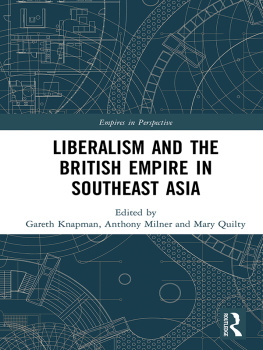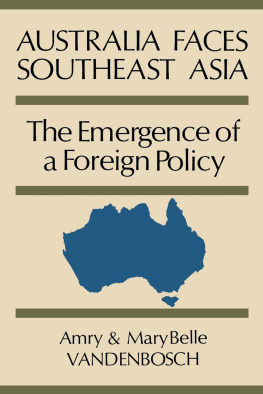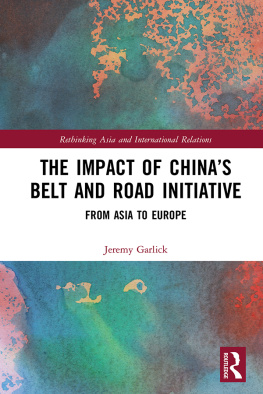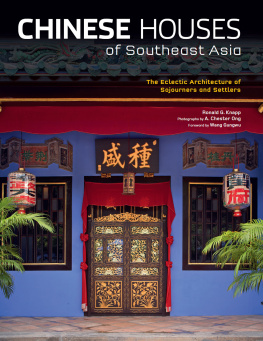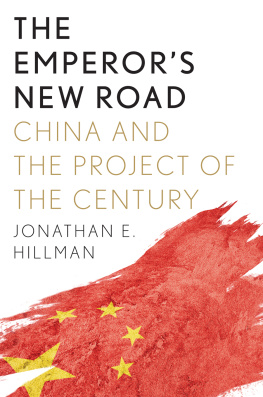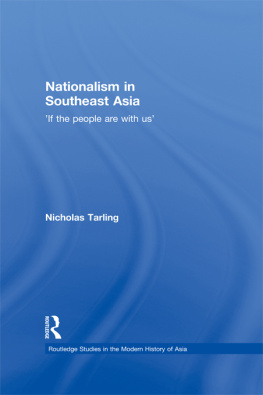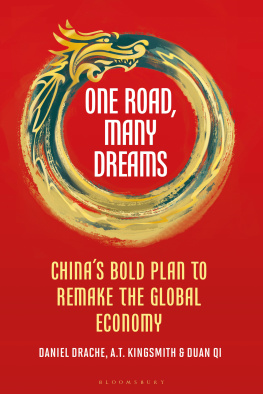Praise for High-Speed Empire
Money talks, and China has it. This vividly observed report shows how Chinese moneyboth governmental and privateis transforming Southeast Asia.
Andrew J. Nathan
Class of 1919 Professor of Political Science, Columbia University
Illuminating study of Chinas ambitious efforts to extend its influence in Southeast Asia by means of a high-speed rail system.
Kirkus Reviews
A richly textured portrait of how Chinas infrastructural diplomacy is changing the urban face of its neighbors. Its not easy to find poetry and importance in industrial zones, half-empty malls, and real estate showrooms, but Doig has done just that in sketching the ambitions of China and its people.
Greg Lindsay
co-author of Aerotropolis: The Way Well Live Next
High-Speed Empire
Chinese Expansion and the Future of Southeast Asia
Copyright 2018 by Will Doig
All rights reserved
Published by Columbia Global Reports
91 Claremont Avenue, Suite 515
New York, NY 10027
globalreports.columbia.edu
facebook.com/columbiaglobalreports
@columbiaGR
Library of Congress Control Number: 2018935104
ISBN: 978-0997722994
Book design by Strick&Williams
Map design by Jeffrey L. Ward
Author photograph by Adam Arjuna
For Jim Doig
CONTENTS
In 1991, when Shanghai decided to build a subway, the World Bank scolded it for opting for such an expensive system as metro without studying all possible alternatives. This was, after all, a city of 6.5 million bicycles and less than 200,000 motor vehicles, most of which were commercial trucks and buses. Might the city be better off improving its bike infrastructure instead? It is doubtful that such an expensive mode can be the core to the urban transport system for passengers, the bank concluded.
Shanghai decided to build a subway anyway. In fact, the city had already broken ground on a system a quarter-century earlier when, in 1964, its Tunnel Engineering Bureau dug a prototype 2,100-foot tunnel and metro station deep below Hengshan Park in the French Concession. The project was shelved a few years later amid the mayhem of the Cultural Revolution, but in January 1990 the State Council greenlit a fresh plan, and work began anew.
The Shanghai subway project represented a major public works contract, and firms from a dozen countries bid to have a hand in building it. For the next five years, 10,000 workers bored through Shanghais claylike soil. Shanghai, it seems, is eager to play catch-up with the rest of the world, wrote the New York Times .
That it was. On April 10, 1995, Shanghai inaugurated its first full metro line, a state-of-the-art ten miles of tunnel and thirteen stations. At the Peoples Square stop, officials unfurled a red carpet. One Hong Kong developer marveled that the nimble process was actually less bureaucratic than in the United States. Agog at its own strength, Shanghai set the ambitious goal of expanding the system to two hundred miles of track by 2045, a full fifty years in the future.
It beat its own deadline by decades. Today, over 400 miles in length, the Shanghai Metro is the worlds longest subway system, carrying more than three billion passengers each year.
These kinds of colossal infrastructure projects have become marketing devices for Chinas unstoppability. Forty years ago, the countrys transportation infrastructure coverage was among the sparsest in the world. Today, nearly 2.5 million miles of roads branch out across its provinces. In 2011, the length of Chinas expressways surpassed the U.S. Interstate Highway Systems. Ten of the worlds top twenty container ports are in China, including the biggest, in Shanghai. In 2015, the government announced its intention to build forty new airports in the next five years. This breakneck mentality propels the private sector as well. Last year, a Changsha-based real estate developer built a fifty-seven-story skyscraper in nineteen days, simply because he could.
The crown jewel of these ventures is Chinas high-speed rail system, constructed in the space of about a decade, and bigger than any other high-speed system in the world. The networks first train rolled from Beijing to Tianjin on August 1, 2008, days before the opening ceremonies of the Summer Games in Beijing. Eight years later, China Railway announced its high-speed network had surpassed the 20,000 kilometer mark, then projected it to extend beyond 45,000 kilometers by 2030.
Since then, Chinas most visible railway endeavors havent even been in China itself. A major thrust of the countrys economic strategy involves building infrastructure beyond its own borders. Many of these efforts fall under its One Belt One Road initiative, Chinas plan to pull half the globe into its orbit with an interconnected network of roads, rail, airports, and seaports. The plan has become its own brandon my Cathay Pacific flight to Hong Kong, the seatback TV played Bank of China ads offering to connect me to One Belt One Road opportunities. Its on freeway billboards in Bangkok and front-page news in Vientiane. Maps of the initiative show arrows criss-crossing the earth, from Asia to Africa to Europe. Many of the countries in the path of these routes cant build such infrastructure themselves, and see Chinas offers to build it for them as a chance to leapfrog up the development chain.
The Belt refers to the Silk Road Economic Belt, an overland network of infrastructure, supply chains, and trading routes stretching from China to Western Europe. The Road is the Twenty-first Century Maritime Silk Road, a web of shipping lanes traversing the Indian Ocean, Persian Gulf, and Mediterranean Sea. Taken together, its a scheme of surreal scope, even for China. Yet its not a cohesive plan so much as a well-funded idea that could manifest in various ways. It includes pools of financial backing for transport, energy, and urbanization projects, and a mandate to form economic partnerships and liberalize cross-border trade. Its also evolved as a bid to counterbalance American influence in the region, and a marketing slogan to brand China as the worlds premiere global developer.
Though only officially launched by Chinese President Xi Jinping in 2013, the effort has quickly become the countrys marquee initiative. In February 2016, a freight train rolled from China to Iran for the first time, a 6,462-mile journey through oil- and gas-rich Central Asia. On the Indian Subcontinent, China is developing a corridor of roads, rail, and energy infrastructure linking Pakistans coast to the western Chinese territory of Xinjiang. One Belt One Road now includes a Turkish seaport bought by Chinese state-owned companies, an industrial park in Belarus, and a railway from Nairobi to the Kenyan coast. Encompassing more than sixty countries and over a trillion dollars in spending, the Belt and Road Initiative is an endeavor to make China an epicenter of global commercial activity.
As far as China is concerned, this is simply a return to the natural order, the end of a long and embarrassing losing streak that shouldnt have occurred in the first place. This is what Xi means when he talks about the Chinese Dreamnot Herbert Hoovers a chicken in every pot and a car in every garage, but the return of a Middle Kingdom to be reckoned with. Just as China sits at the center of the world map that hangs in Beijings Foreign Ministry, One Belt One Road is a plan to reclaim the countrys global centrality, with the hardware of its worldwide trade stretching across Asia, Africa, and Europe, all of it ultimately flowing back to the Peoples Republic.


